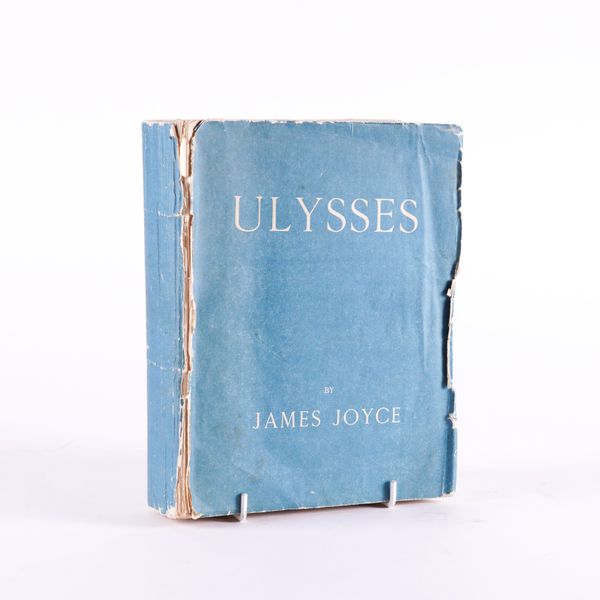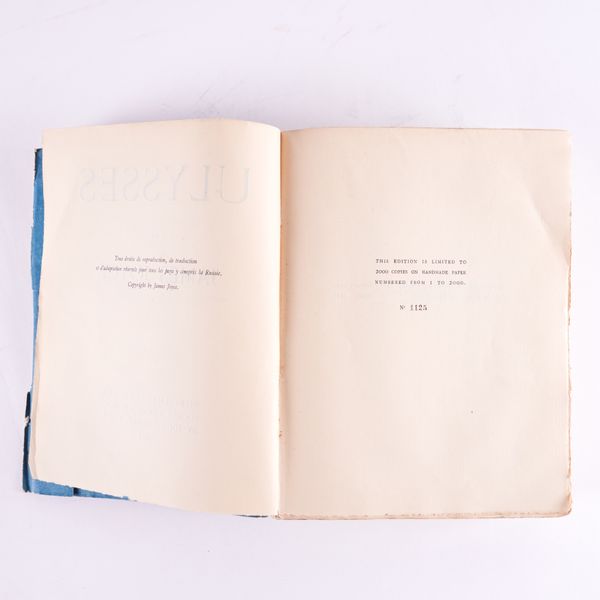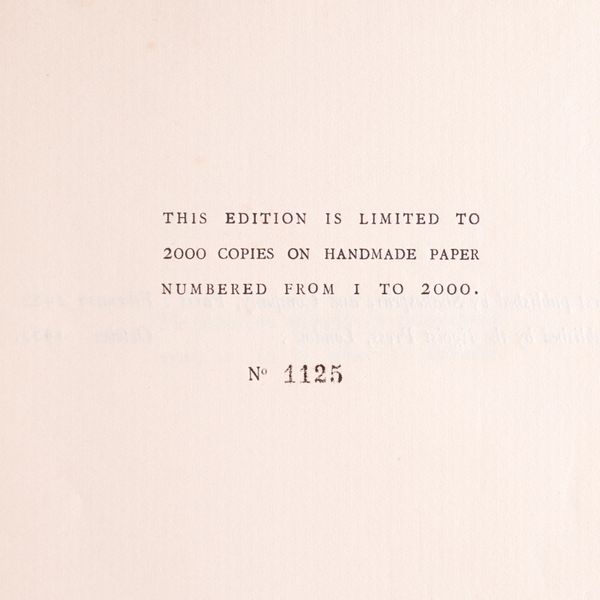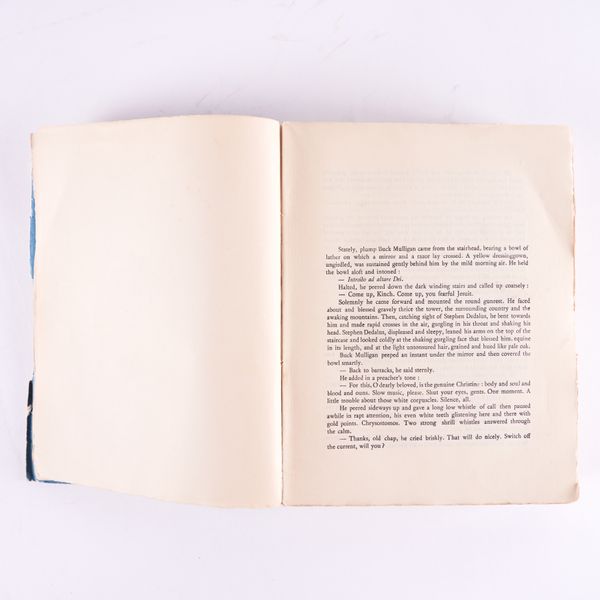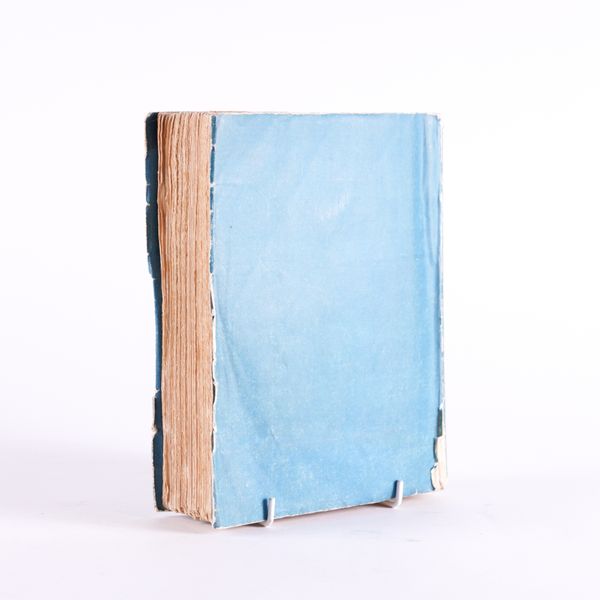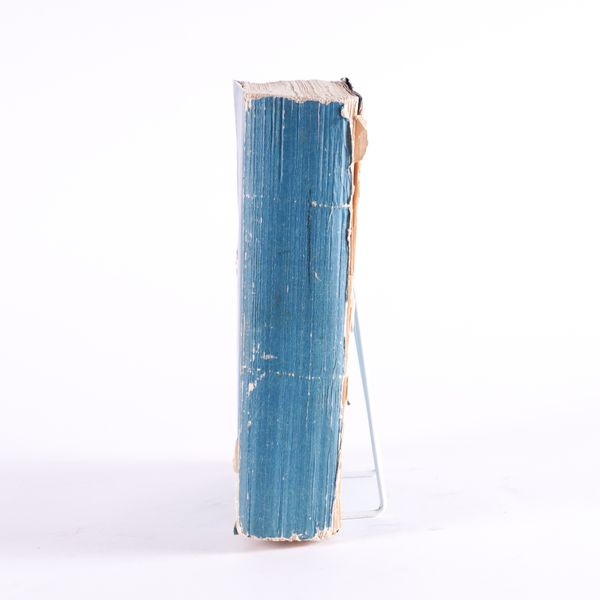JOYCE, James (1882-1941). Ulysses, Paris, "Published for the Egoist Press, London, by John Rodker, Paris," 1922, 4to, original blue wrappers. FIRST EDITION, second printing [see note]. NO. 1,125 OF 2,000 COPIES "ON HANDMADE PAPER." Slocum & Cahoon A18.
| Estimate: | £500 - £800 |
| Hammer price: | £1,600 |
JOYCE, James (1882-1941). Ulysses. Paris/Dijon: "Published for the Egoist Press, London, by John Rodker, Paris," [colophon: "Printed by Maurice Darantiere at Dijon, France"], [October] 1922. 4to (228 x 178mm). Half title (without the 8-page list of errata, occasional light spotting, some faint marginal browning, the title page still attached to the half title at the upper edge, i.e. unopened, as evident in the illustration). Original pale blue wrappers lettered in white, partly unopened, uncut (separated at hinges, but holding, some fraying and creasing, a few faint stains). FIRST EDITION, second printing, OF ONE OF THE FOUNDATIONAL TEXTS OF MODERNISM. NUMBER 1,125 OF 2,000 COPIES "ON HANDMADE PAPER". "The novel deals with the events of one day in Dublin, 16 June 1904 ... now known as 'Bloomsday'. The principal characters are Stephen Dedalus ... Leopold Bloom, a Jewish advertisement canvasser; and his wife Molly. The plot follows the wanderings of Stephen and Bloom through Dublin, and their eventual meeting. The last chapter is a monologue by Molly Bloom. The various chapters roughly correspond to the episodes of Homer's Odyssey, Stephen representing Telemachus, Bloom Odysseus, and Molly Penelope. In the course of the story a public bath, a funeral, a newspaper office, a library, public houses, a maternity hospital, and a brothel are visited ... The style is highly allusive and employs a variety of techniques, especially those of the stream of consciousness and of parody, and ranges from extreme realism to fantasy" (The Oxford Companion to English Literature, ed. Drabble, 1985). The early publishing history of Ulysses is convoluted and problematic, fraught with censorship, and still, over a century after its first appearance, the subject of debate. The appendix to the O.U.P.'s Oxford World's Classics edition of 1993 states: "... the book's publishing history is a matter of dispute. The full facts (complete histories of all impressions of each edition) are not known, have not been published, or are contested. Slocum and Cahoon - the standard bibliography - has long been considered in need of correction." The present copy is the second printing published under the aegis of the Egoist Press from the plates of the first edition printed in Paris by Shakespeare & Company in February 1922. It is sometimes misleadingly referred to as the "first English" or "first U.K. edition"; misleadingly, since the first edition to be physically printed in England wasn't until that of the Bodley Head in 1936. This second printing could therefore more properly be described as the first edition printed in France intended for distribution in England, although it included in its print-run 500 copies destined for the United States. According to some sources, these were seized and burnt by U.S. customs, an assertion that the appendix of the Oxford edition dismisses as a "folktale": the fact that a few copies of this errant American issue have subsequently resurfaced would seem to bear out their scepticism. Connolly The Modern Movement. 100 Key Books 42; Grolier Joyce 69: "Universally hailed as the most influential work of modern times"; Slocum and Cahoon A Bibliography of James Joyce 1882-1941 (1953) A18.
